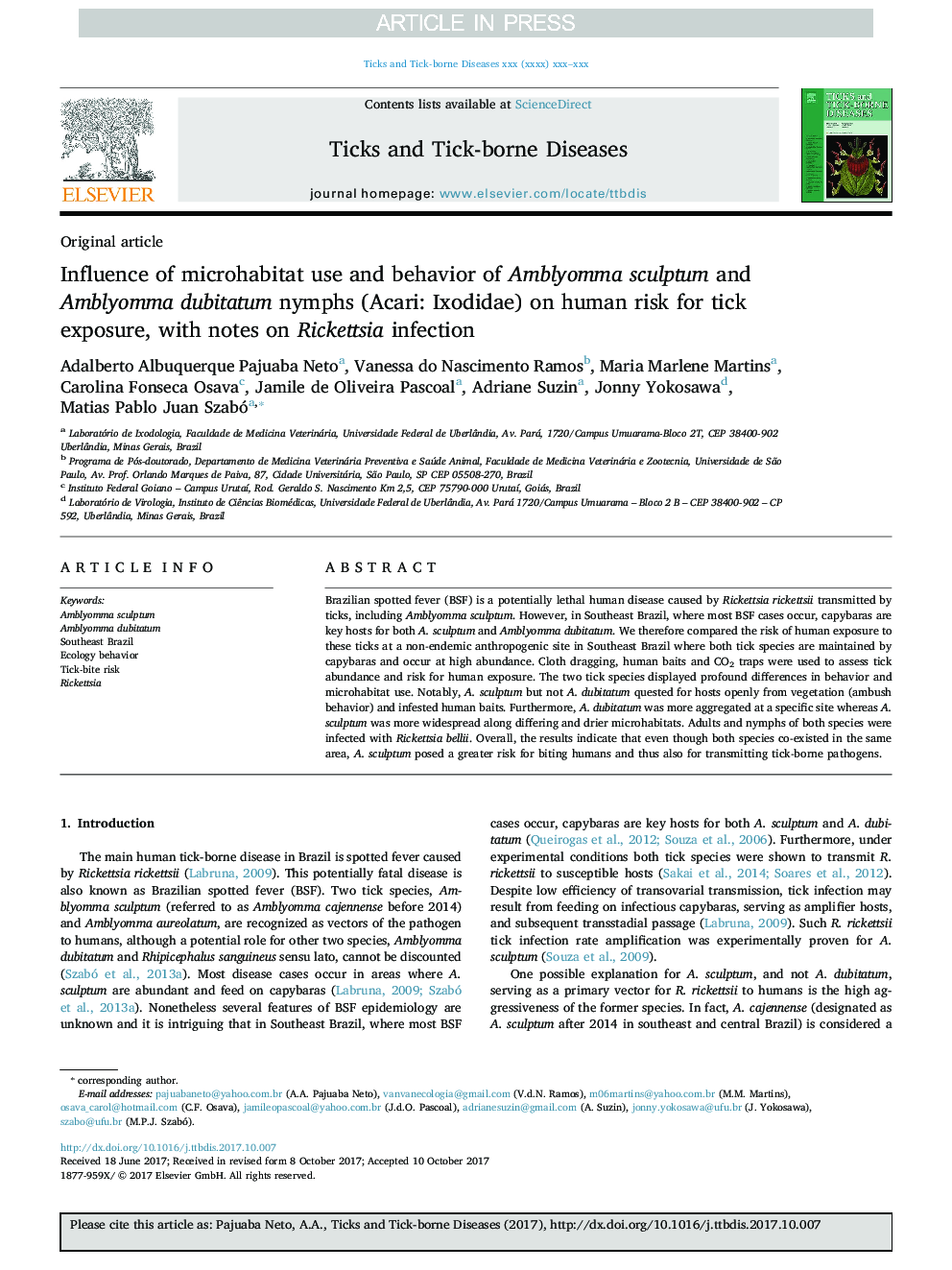| Article ID | Journal | Published Year | Pages | File Type |
|---|---|---|---|---|
| 8507447 | Ticks and Tick-borne Diseases | 2018 | 5 Pages |
Abstract
Brazilian spotted fever (BSF) is a potentially lethal human disease caused by Rickettsia rickettsii transmitted by ticks, including Amblyomma sculptum. However, in Southeast Brazil, where most BSF cases occur, capybaras are key hosts for both A. sculptum and Amblyomma dubitatum. We therefore compared the risk of human exposure to these ticks at a non-endemic anthropogenic site in Southeast Brazil where both tick species are maintained by capybaras and occur at high abundance. Cloth dragging, human baits and CO2 traps were used to assess tick abundance and risk for human exposure. The two tick species displayed profound differences in behavior and microhabitat use. Notably, A. sculptum but not A. dubitatum quested for hosts openly from vegetation (ambush behavior) and infested human baits. Furthermore, A. dubitatum was more aggregated at a specific site whereas A. sculptum was more widespread along differing and drier microhabitats. Adults and nymphs of both species were infected with Rickettsia bellii. Overall, the results indicate that even though both species co-existed in the same area, A. sculptum posed a greater risk for biting humans and thus also for transmitting tick-borne pathogens.
Related Topics
Life Sciences
Agricultural and Biological Sciences
Animal Science and Zoology
Authors
Adalberto Albuquerque Pajuaba Neto, Vanessa do Nascimento Ramos, Maria Marlene Martins, Carolina Fonseca Osava, Jamile de Oliveira Pascoal, Adriane Suzin, Jonny Yokosawa, Matias Pablo Juan Szabó,
